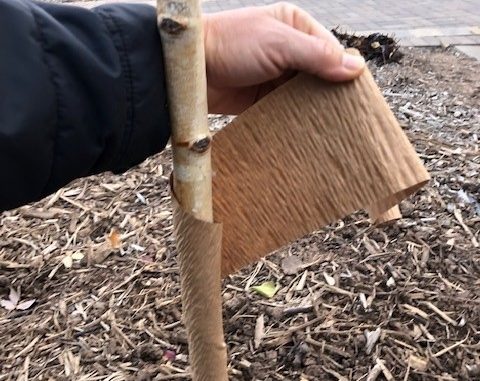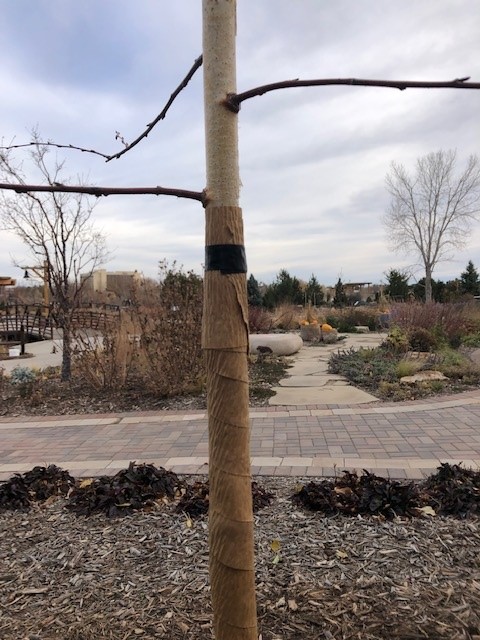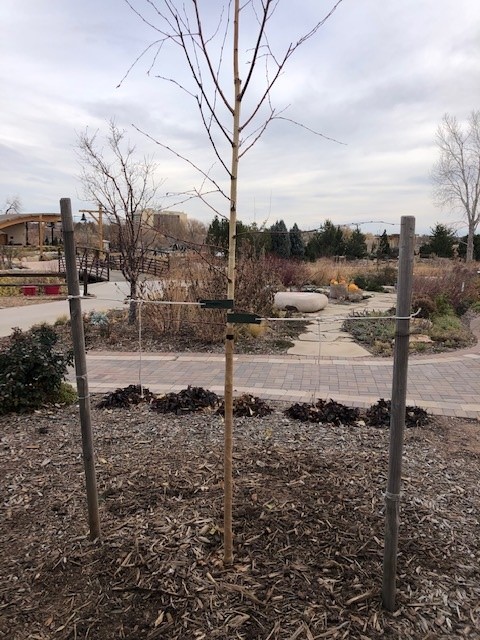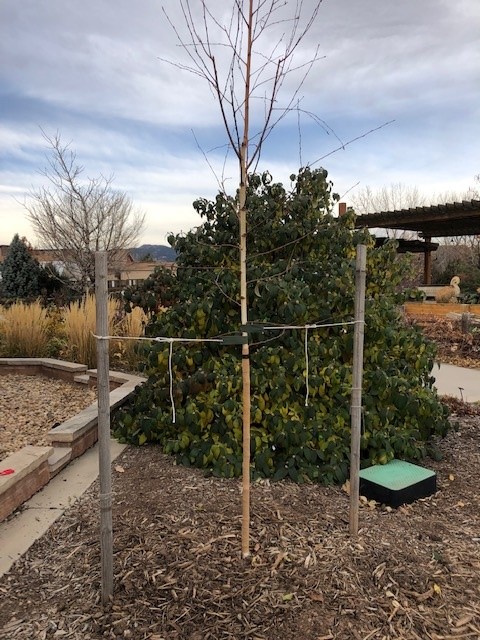
Selena Kunze | Gardens on Spring Creek
This time of year, we are bombarded with ways to protect ourselves from the upcoming cold and flu season. Similarly, trees and shrubs need protection from the elements to make it through winter in good condition. Ensuring that your trees are properly watered, pruned and protected year-round will help them withstand irregular weather events and will help you maintain a healthy backyard forest for many years.

Winter watering is probably the single most important, and oft-neglected, way to keep your trees healthy through winter. Young trees, especially, need consistent moisture to develop healthy root systems. Most trees need around 10 gallons of water per inch of trunk diameter (measured at chest height) per watering. During extended dry weather with no snow cover, plan on watering once or twice a month when temperatures are above 40 degrees Fahrenheit. Water slowly to allow soils to absorb moisture to a depth of at least 12 inches.
While moist soils are better insulators than dry ones, mulch can also help protect your tree’s root zone from temperature swings and moisture loss. Apply a three-inch-deep layer of wood or rock mulch to the base of the tree, past the drip line (the edge of the leaf canopy). Avoid piling mulch right against the trunk—it traps moisture against the bark—promoting disease entry and encouraging insect and rodent pests to take up residence.

Young trees and those with thinner bark (maples, ashes, willows, honeylocusts, and crabapples) will benefit from having their trunks protected with tree wrap. Commonly made of polypropylene fabric, corrugated cardboard, heavy paper, or burlap, tree wrap should be applied around Thanksgiving and removed by Easter. Wrap trees from the ground up to the first branch, overlapping each layer by a third, and secure it at the top. Be careful not to cut the bark when removing the tree wrap in spring.
Newly planted trees located in exposed areas also benefit from being staked until they develop strong root systems. Be sure the tree is not held completely rigid; allowing some movement encourages the tree to develop reactionary wood for strength. Use arbor tie or tree straps that do not completely encircle the trunk to prevent girdling injury. Check it often, removing the stakes within two years…sooner if the tree is stable.

Winter is also a great time to prune your trees, removing dead, diseased, and damaged wood with a sharp saw or pruners. Pruning in the cold of winter helps prevent the spread of disease. If temperatures are above 40 degrees, you should disinfect your tools between every cut, especially when working on fruit trees or those susceptible to common diseases.
Watch for damage caused by hungry rodents or deer. Gnaw marks at the base of trunks, chewed branch tips, or antler rubs can weaken or kill trees. Use cages and other deterrents to prevent critter access to your trees. The more you maintain the health of your trees through winter, the better they will withstand our crazy Colorado weather.
Support Northern Colorado Journalism
Show your support for North Forty News by helping us produce more content. It's a kind and simple gesture that will help us continue to bring more content to you.
BONUS - Donors get a link in their receipt to sign up for our once-per-week instant text messaging alert. Get your e-copy of North Forty News the moment it is released!
Click to Donate